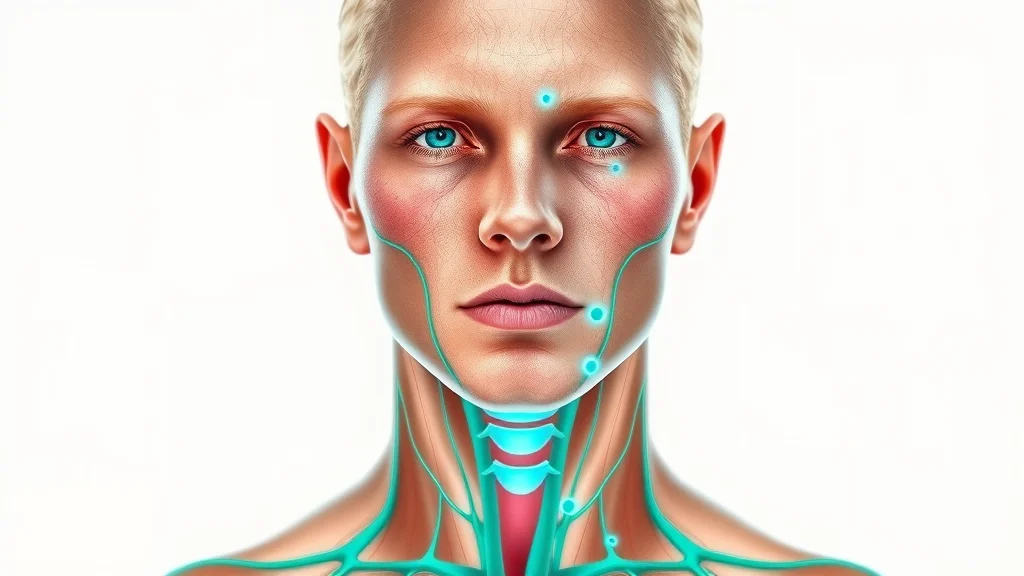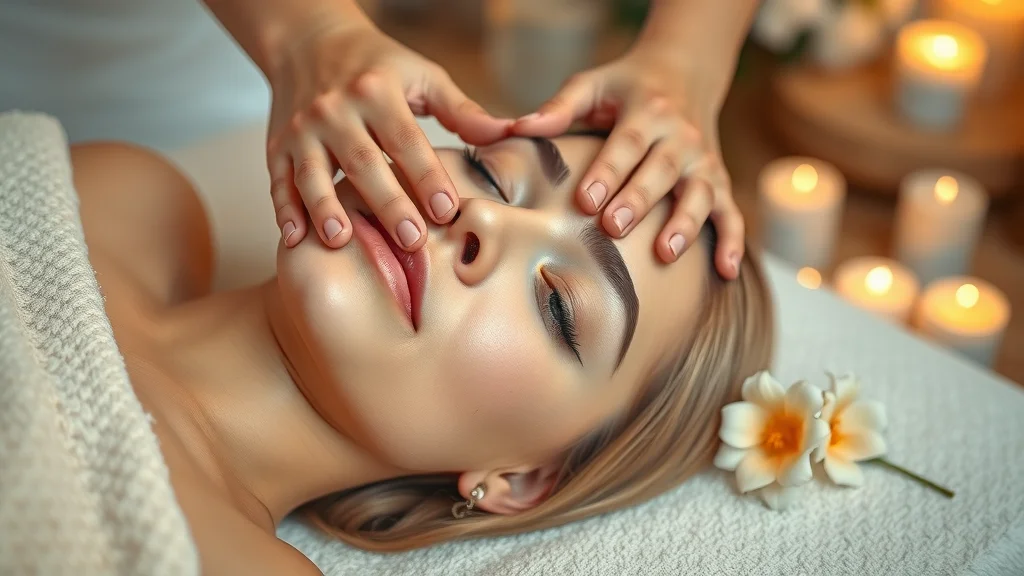Did you know that more than 70% of your immune cells reside in your lymphatic system? Yet many people have no idea just how central this system is to unlocking radiant skin and vibrant health. If you’ve tried countless skin care routines with minimal results, the missing link might actually be your lymphatic health. This guide dives deep into the science, the methods, and the life-changing potential of lymphatic drainage—an essential process that’s often overlooked, but could be the skin clarity secret you’ve been seeking. Read on to discover how simple massage techniques could transform your complexion and your overall wellness.
Did You Know? The Surprising Impact of Lymphatic Drainage on Skin Health
"More than 70% of your immune cells reside in your lymphatic system — yet so few realize its direct impact on skin clarity and overall wellness."
Your lymphatic system works silently in the background, playing a huge role in both your immune system and skin health. While many focus on topical creams, cleansers, and serums to treat acne or dullness, the real transformation may begin below the surface. Lymphatic drainage facilitates the removal of toxins and waste that could otherwise build up and contribute to inflammation, fluid retention, and skin issues like puffiness or breakouts. By actively supporting your lymphatic system through targeted techniques such as drainage massage, you are tapping into your body’s natural ability to detox and heal itself—directly benefiting your skin’s appearance and overall well-being.
Whether you struggle with persistent puffiness, sluggishness, or recurring breakouts, understanding and practicing manual lymphatic drainage can produce visible results in mere days. Let’s explore how this often-overlooked technique can supercharge your skin’s clarity and help you feel healthiest from the inside out.

What You'll Learn About Lymphatic Drainage Massage and Skin Clarity
The fundamentals of the lymphatic system and lymphatic drainage
How lymphatic drainage massage benefits skin health
Signs you may need lymphatic drainage
Step-by-step drainage massage techniques
Expert perspectives and latest research on manual lymphatic drainage
Practical tips to integrate lymphatic drainage into your skincare and wellness routine
Understanding the Lymphatic System: Foundation of Lymphatic Drainage
Lymphatic System 101: Functions and Mechanisms
The lymphatic system is a vast network of vessels, lymph nodes, and organs that acts as your body’s natural cleansing crew. Lymph fluid travels through these vessels, picking up toxins, excess fluid, and waste products to shuttle them away from tissues and toward elimination. Your lymph nodes, strategically clustered around the neck, groin, and armpits, function as filtration hubs, trapping harmful invaders and supporting your immune system. Without an efficient lymphatic system, these waste products can accumulate, impacting both how you feel and how your skin appears.
In contrast to the circulatory system, which is powered by your heart, lymphatic flow relies on gentle muscle contractions, movement, and sometimes manual lymph techniques—like rhythmic massage or lymphatic drainage—to keep things flowing. Health professionals from physical therapists to certified lymphedema specialists often utilize these techniques to treat lymphedema, a health condition marked by chronic swelling, but they are also relevant for anyone seeking optimal health and glowing skin. Understanding how the lymphatic system functions is the first step in reclaiming both inner and outer radiance.

How the Lymphatic System Affects Skin Clarity
Healthy, efficient lymphatic drainage can be the difference between a clear, glowing complexion and persistent skin issues. When the lymphatic system becomes sluggish or congested—due to lack of movement, dehydration, or underlying health conditions—the body struggles to eliminate waste products efficiently. This can result in dull, congested, or puffy skin, as toxins and excess fluid accumulate just beneath the surface. Supporting your lymphatic system ensures that cells receive the nourishment they need while waste is quickly removed—paving the way for healthy, fresh-looking skin.
Besides detoxification, the lymphatic system is integral to immune response and swelling control. It helps reduce skin swelling and puffiness and contributes to your body’s front-line defense against infections and inflammation. Regular stimulation—through gentle exercise, dry brushing, and especially targeted lymphatic drainage massage—can promote the health of your lymph vessels and nodes, supporting both your inner health and outer beauty.
Detoxification
Immune system support
Reduction of skin swelling and puffiness
What Is Lymphatic Drainage? The Essentials
Manual Lymph Drainage vs. Lymphatic Drainage Massage: A Comparative Analysis
Lymphatic drainage refers to any technique or process that encourages the lymphatic system to carry away waste and excess fluid. The two most common forms are manual lymph drainage—a specialized set of light, rhythmic strokes usually performed by a trained therapist—and lymphatic drainage massage, which can be practiced both professionally or at home. Both approaches aim to stimulate lymph flow, but manual lymphatic drainage is often used clinically for health conditions like lymphedema, or after certain surgeries (such as breast cancer treatment), while simple drainage massage techniques can focus on daily wellness and skin clarity.
Choosing between these approaches depends on your goals and health status. Those recovering from surgery or a health condition should work with a physical therapist or certified lymphedema specialist. For overall wellness or clearer skin, self-massage with correct technique is often both safe and effective. The most important factor is proper execution—gentle, directional movement toward lymph nodes and avoidance of excessive pressure.

Lymph Drainage Benefits: Beyond Skin Clarity
Lymphatic drainage isn’t just about your skin—it’s a full-body boost. Regular drainage massage techniques offer diverse advantages:
Boosts circulation
Alleviates inflammation
Enhances immune response
Aids post-surgical recovery
"Regular lymphatic massage can visibly reduce puffiness and improve skin tone in as little as one week." – Certified Lymphatic Therapist
Improved circulation helps reduce fluid retention and distributes nutrients more effectively, while anti-inflammatory effects mean less chance for redness or irritation. For those recovering from injury or surgery (like after breast cancer treatment), professional manual lymphatic drainage is widely recommended to manage symptoms of lymphedema and bring down excess fluid in affected areas. Whether for beauty or more serious health conditions, the upsides are significant and well-supported by professional massage therapists and clinical research.
How Lymphatic Drainage Massage Works

Effective Massage Techniques for Lymphatic Drainage
Gentle, rhythmic strokes
Directional movement towards lymph nodes
Importance of pressure and repetition
An effective lymphatic drainage massage uses a gentle, rhythmic touch rather than deep tissue pressure. The motion should always be toward major lymph nodes (like those in your neck, armpits, and jawline), helping to direct lymph fluid back toward the body’s natural drainage points. Correct technique is crucial—using too much pressure can actually compress lymphatic vessels and block flow, while light, repetitive strokes stimulate movement.
Most certified lymphatic massage therapists use sequences that start near the lymph nodes and progress outward, working in small, circular, or sweeping movements. When performing self-massage at home, always follow recommended patterns and avoid sensitive or infected areas. Aim for sessions lasting at least 5-10 minutes, repeated several times a week, to see the best results for both lymphatic health and skin clarity.
Professional Manual Lymphatic Drainage: What to Expect
Visiting a trained professional for manual lymph drainage provides a customized, deeply relaxing experience. Massage therapists (or certified lymphedema specialists) will evaluate your unique needs, whether they’re cosmetic (reduced puffiness, improved skin tone) or medical (post-surgical recovery for symptoms of lymphedema). During a session, expect light, systematic touch following your body’s lymphatic pathways, with a focus on areas showing fluid retention or swelling.
Sessions typically last 30-60 minutes, with no discomfort or use of dark oils or intensive pressure—a far cry from deep-tissue massage. Professional care is ideal for complex health conditions involving the lymphatic system or when learning correct manual lymph drainage techniques for home use. Many clients report immediate sensations of lightness, improved skin clarity, and sometimes increased energy right after a session.
DIY Lymphatic Drainage at Home: A Step-By-Step Guide
The benefits of simple, at-home lymphatic drainage massage are accessible to everyone. Start by gently cleansing your skin and using clean hands or a smooth tool, such as a jade roller. Use featherlight upward and outward strokes on the face and neck, always moving in the direction of your lymph nodes—toward your ears and under the jaw. For the body, begin near major lymph node clusters and work outward along the arms or legs. Focus on regular, gentle movement and don’t apply too much pressure. Consistency is key—practice this ritual 2-3 times weekly to support lasting results.
Comparison Table: Manual Lymph Drainage vs. | ||||
Technique |
Performed By |
Main Purpose |
Best For |
Typical Results |
|---|---|---|---|---|
Manual Lymph Drainage |
Certified professional/therapist |
Medical/focused treatment (e.g., lymphedema, post-surgery) |
Medical conditions, post-op recovery |
Reduces swelling, supports healing |
Lymphatic Drainage Massage |
Professional or self-administered |
Wellness, beauty, skin clarity |
General wellness, puffy skin, mild congestion |
Improved tone, reduced puffiness, clearer skin |
At-Home Drainage Techniques |
Yourself |
Routine lymph support, daily practice |
Everyone |
Ongoing wellness, cumulative skin health |
Signs You Need Lymphatic Drainage: Recognizing When Your Lymphatic System Is Clogged

Persistent puffiness
Frequent skin breakouts
Unusual fatigue
Swelling in limbs
Recurring infections
"If your body feels heavy and your skin appears dull, your lymphatic system could be asking for help."
If you notice that your skin remains swollen, you suffer from ongoing dullness, or breakouts keep occurring even after changing your skin care regime, these could all be signals of a sluggish lymphatic system. Fatigue, swelling in arms or legs, and frequent or stubborn infections may also indicate that your lymphatic system isn’t clearing lymph fluid efficiently. Addressing these symptoms with regular lymph drainage techniques can rejuvenate how you look and feel—making you more resilient inside and out.
Never ignore these signs, especially if they persist despite other interventions. While everyone can benefit from improved lymphatic function, those experiencing chronic symptoms of lymphedema, severe swelling, or a health condition should always consult a health professional or certified lymphedema therapist for proper diagnosis and guidance.
The Best Ways to Support and Drain the Lymphatic System Naturally

Regular drainage massage
Staying hydrated
Gentle movement and exercise
Dry brushing
Healthy, unprocessed diet
Supporting your lymphatic system doesn’t end with massage. Daily movement is crucial—even a brisk walk, gentle stretching, or yoga can promote lymph flow. Drinking plenty of water helps maintain lymph fluid viscosity, while dry brushing stimulates circulation and gently exfoliates the skin. A diet rich in fiber, antioxidants, and minimal processed foods further reduces toxin build-up and supports your body’s natural detoxification abilities.
Combining these habits with routine lymphatic drainage massage is the ultimate strategy. Even minimal changes—like drinking an extra glass of water or swapping chips for fresh fruit—can help your body and skin recover from regular environmental or lifestyle-related stressors. As you integrate these wellness routines, expect tangible improvements not only in skin clarity but in your overall vitality and energy.
Lymphatic Drainage and Skin Clarity: Research, Results, and Real-Life Success
Scientific Evidence Linking Lymphatic Drainage to Improved Skin Health

Recent studies reveal a direct relationship between lymphatic health and skin clarity. Researchers have demonstrated that individuals who undergo regular lymphatic drainage massage experience a decrease in facial puffiness and improvements in skin texture within just a week. The science is compelling: properly-moving lymph prevents fluid retention and cellular debris buildup, both linked to acne, irritation, and uneven skin tone. Regular manual lymphatic drainage has even shown success as an adjunct therapy for chronic inflammatory skin conditions.
In clinical settings, dermatologists and massage therapists unite in recommending lymphatic drainage for both aesthetic and therapeutic outcomes. This synergy of tradition and research underscores why more people now look to the lymphatic system for beauty benefits that start from within.
Expert Insights: Dermatologist and Massage Therapist Perspectives
"Reducing lymphatic congestion is one of the most underappreciated strategies for clear skin." – Board-certified Dermatologist
Top wellness experts emphasize that while the skin often reveals the first symptoms of lymphatic congestion, it also responds swiftly to drainage techniques. Massage therapists notice dramatic reductions in client swelling and brighter skin, while dermatologists report improved resistance to infections and flares in patients who practice regular lymph drainage. Their advice is unanimous: lymphatic care should be a foundational part of any skin wellness protocol—alongside sun protection, hydration, and a tailored skincare routine.
Common Myths and Facts About Lymphatic Drainage Massage
Myth: Lymphatic drainage is only for post-surgery patients
Fact: Anyone can benefit from lymph drainage for better skin and health
Myth: You have to visit a clinic for results
Fact: Simple at-home techniques are effective too

It’s a common misconception that lymphatic drainage is only for those recovering from surgery or serious illness. While it is an important therapy for people with lymphedema and post-breast cancer surgery swelling, regular drainage massage and manual lymphatic techniques provide measurable benefits for anyone. Another myth is that professional intervention is the only way to see results. In reality, consistent self-massage or routine wellness practices like dry brushing and hydration can make a big difference in lymphatic and skin health. Understanding these facts helps more people harness this powerful, natural technique daily.
Frequently Asked Questions (FAQs) About Lymphatic Drainage and Skin Health
What is lymphatic drainage massage good for?
Lymphatic drainage massage is ideal for reducing swelling, supporting detoxification, enhancing immune function, and promoting clearer, more radiant skin. It’s especially helpful for fluid retention and skin puffiness.How often should you practice manual lymph drainage?
For general wellness and improved skin clarity, aim for lymph drainage massage 2-3 times per week. Those with medical needs should follow their therapist’s recommendations.Are there any side effects to lymphatic massage?
When performed correctly, lymphatic massage is very gentle and safe. Mild soreness or increased urination (as waste is flushed out) is possible, but adverse effects are rare. Always consult a therapist if you have an active infection or severe swelling.Can lymph drainage really clear my skin?
Yes! Lymphatic drainage can decrease puffiness, support clearer pores, and improve tone by removing underlying toxins and excess fluids.How long until I see results from lymphatic drainage?
Some people notice visible improvements—like reduced swelling or glow—within one week. For lasting changes, regular practice over several weeks is recommended.
People Also Ask: What Does Lymphatic Drainage Do?
Answer: Lymphatic drainage supports the removal of toxins and waste from the body, contributing to reduced swelling, stronger immunity, and clearer skin.
People Also Ask: How Do You Tell If You Need Lymphatic Drainage?
Answer: Common signs include persistent puffiness, frequent breakouts, sluggishness, limb swelling, or a tendency to get sick often.
People Also Ask: What Is the Best Way to Drain the Lymphatic System?
Answer: The best approaches are regular lymphatic drainage massage, manual lymph drainage techniques, staying hydrated, and moving your body daily.
People Also Ask: How Do I Know If My Lymphatic System Is Clogged?
Answer: Symptoms such as unexplained lethargy, skin swelling, recurrent colds or infections, and visible skin congestion can indicate a sluggish lymphatic system.
Key Takeaways: Unlock Your Best Skin with Lymphatic Drainage
Lymphatic drainage is vital for skin clarity
Simple massage techniques can deliver real results
Signals of lymphatic congestion should not be ignored
Anyone can practice lymphatic drainage for improved well-being
Ready to Experience the Benefits of Lymphatic Drainage? Start Your Wellness Journey Today
Now is the perfect moment to unlock luminous skin and renewed vitality. Begin incorporating lymphatic drainage massage techniques into your routine and feel the difference inside and out!
 Add Row
Add Row  Add
Add 




Write A Comment